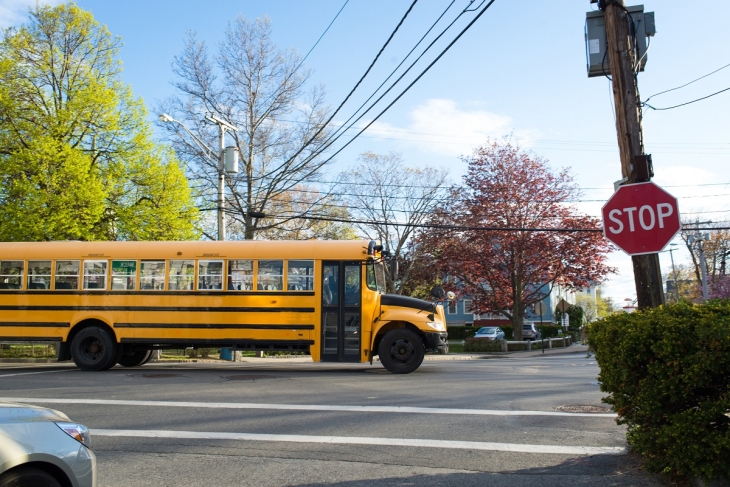The start of a new school year means that big yellow school buses are back on the road. For many, they’re a welcome sign that a familiar routine has resumed. For others, they spark nostalgia. But for district and school administrators across Ohio, the sight of a yellow bus likely spurs stress and concern thanks to widespread bus driver shortages.
Ohio’s bus driver shortage isn’t new. During the 2022–23 school year, several districts were forced to close or transition to remote learning because there weren’t enough drivers to get students to school. In the spring, Cincinnati Public Schools announced new start and dismissal times for the upcoming 2023–24 school year in an attempt to circumvent their driver shortage. Now, with the new school year well underway, plenty of districts—including Akron Public Schools, the state’s seventh largest—are still trying to fill open positions. Doug Palmer, the senior transportation consultant for the Ohio School Boards Association, recently told the Statehouse News Bureau that although districts have revamped routes and taken other steps to address shortfalls, many are still struggling. Things get especially sticky when the drivers that districts do have are sick or unavailable because there isn’t a reliable pool of substitutes to step in.
For the average Ohioan—especially those who don’t rely on buses to get their kids to school every day—school transportation woes might not seem like an urgent problem. But it’s important to recognize just how disruptive bus driver shortages can be. As Palmer points out to the Statehouse News Bureau, they can negatively impact student learning. Fewer bus drivers mean longer routes and increased delays, which lead to kids arriving to school hours late and missing out on valuable instructional time. In fact, at some charter schools, students have missed entire days because their district-provided buses just never showed up. Given the lingering effects of the pandemic on student learning, that’s something schools can’t afford. On the flip side, parents can’t rely on buses to return kids home in a timely or consistent fashion, which disrupts childcare and creates scheduling conflicts. Even if kids do get to school on time, a lack of drivers can force students to miss out on field trips and extracurricular activities because the district can’t provide transportation.
It’s imperative for districts to identify the factors driving shortages and address them. At least one of those factors is fairly obvious. Professional drivers now have a plethora of employment options, including Amazon, UPS, and FedEx—companies that typically offer better pay. But it’s not just wages that draw away veteran drivers or make it difficult for districts to recruit new ones. It’s also the lack of hours and stability offered by school districts, which typically assign morning and afternoon routes and nothing else. That leaves a huge chunk of the day when drivers have nothing to do and thus aren’t making any money. Because districts begin dismissal as early as two or three o’clock, there isn’t time for drivers to find a second job to fill those empty hours. Even worse, some districts use these limited hours to restrict employee benefits and save themselves some cash. Since drivers technically aren’t working a full day, they often aren’t eligible for the lowest cost healthcare options. If schools are failing to offer competitive wages, full-time hours, and healthcare, then it’s not hard to see why drivers might choose to go elsewhere.
Unfortunately, there’s no silver bullet solution. But a provision included in the recently passed state budget that requires the Department of Education and Workforce to develop a “bus driver flex career path model” could help districts get on the right path. The model will create a pathway that allows bus drivers to complete either a morning or afternoon bus route and spend the rest of the day working at a school as an educational aide or student monitor. The Department must ensure that bus drivers are working an eight- to ten-hour shift, which gives them full-time employee status and all it entails—including more pay and covered healthcare. The Department must also ensure that the model doesn’t “adversely impact” a bus driver’s pension. That’s an important stipulation, as the guaranteed-for-life nature of pensions is often considered more attractive than other retirement options and could be leveraged in recruitment efforts.
As my colleague Jeff Murray noted in his initial coverage of this model, it could be a win-win for schools if implemented well. Not only would it help districts recruit more drivers, it would also give them “more hands” in schools to help with student and building needs. Obviously, things like offering competitive wages and paying for training still matter. But if this model is implemented along with a plethora of other strategies, it could help turn the tide.


